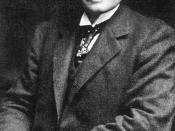IntroductionSince the end of the 19th century, when factory manufacturing became widespread and the size of organisations increased, people have been looking for ways to motivate employees and improve productivity. Classical schools of management thought was built up at that time by Frederick.W.Taylor. After that, management became a ture science. However, in 1930s, pactical problems caused by Taylorism led to its replacement by the human relations school of thought. In this stage, theory built up with the diffusing of labour movement in capitalism countries.
This essay will focus on two of the earliest management approaches of Taylorism (scientific management ) and the Human Relations School of thought. First the writer would like to compare and contrast of the two theories. This is followed by the central tenets of both models and finally giving examples of how they are still applied in contemporary societyCompare and ContrastManagement articles usually consider Mayo as the founder of the Haman Relations Movement.
It is true, but is kind of thought looks like human relations and Taylorism are opposed. In writer's opinion, human relations did not replace Taylorism but that both approaches are rather complementary: Taylorism determining the actual organisation of the work process and human relations helping to adapt the workers to the new procedures.
Now we compare and contrast this two apporaches in several different angles.
Comparison:First of all, Taylorism and Human Relations school of thought had similar goal. They looking for ways to motivate workers to increase efficiency. In order to achieve this goal they try to identify workers' needs, which would then allow managers to "manipulate or influence these needs, making it easier for employees to improve their performance" . Basically, two apporaches are try to use diffierent methods to achieve the same thing.
Besides, this two theories are similar in...


